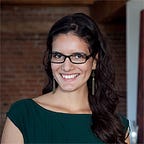The Design & Content conference in sketch notes
This August I took a flight from Montreal to Vancouver. Sitting on the plane, I was torn between being a productive designer (who reads UX articles) or a normal human being (who watches movies) for the next few hours. I finally opted to watch the new Cinderella movie, because you know, nostalgia, talking mice, and all that.
The motto “be kind and be brave” was repeated throughout the movie. Oddly enough, it connected with the next two days I spent at the Design & Content Conference, where kindness was a primary theme.
The 2015 Design & Content Crew
We had an amazing group of speakers who covered a broad range of topics, from building a content strategy team to managing large-scale projects, and from designing with kindness to trusting your gut.
First Day
Sara Wachter-Boettcher’s talk was incredible and one of my favourites by far. She conveyed her ideas with passion and sincerity. Sara called upon the crowd to “make everything you do an act of kindness,” and be mindful of assumptions about users. She gave unfortunate examples of content gone awry and how greediness for user information can hurt. I laughed, almost cried, shook my head incredulously, and vowed I would never fall into the trap of assumptions and biases again.
Mallory O’Connor taught us about building a content strategy team. I didn’t know there were so many specialized content roles! Content strategists, leads, owners, authors and migrators are roles a UX team should consider for projects involving large amounts of content.
James White from Signalnoise was also there, speaking about his journey as a designer and illustrator. The lesson I learned was: be kind to yourself and don’t overlook your silly ideas. They might just be the thing that the world wanted.
Kathy Wagner walked us through customer journeys and how content can be adapted to reflect users’ current state of mind. “Think concepts, not copy” is something I should stick with more often in the early stages of discovery and wireframing.
Haig Armen shared his story about building Mine Block. We learned about meta-products, whether it’s a server that allows kids to play Minecraft without worrying about griefing, or a lizard’s tank connected to the Amazonian forest weather.
Tizzy Asher talked about content relevancy, and presenting the right information for the right user mindset. She gave examples of a new Expedia tool called ScratchPad, which helps travellers compare different options before booking their final choice.
Karen McGrane discussed the controversy between adaptive and responsive content. We cannot use a device to guess the users’ mindset.
People make the same decisions regardless of context.
Karen quoted Scott Kelton Jones and it linked well with Cathy’s talk; we should use the right techniques to serve appropriate content for each stage of a customer’s journey. It’s our role to facilitate their decisions.
Second Day
Dana Chisnell (she works for President Obama at the U.S. Government Digital Service!) spoke about design and democracy at Vancouver’s Creative Mornings. She called upon us to make the world a better place with our design super-powers. It starts with a simple action: get involved in the electoral process. Observe, take notes, and help out.
Eileen Webb began the second day with a talk on guidelines. She gave… guidelines on how to integrate content guidelines (!) with existing processes. They’re useful for consistency across a large content database.
Denise Jacobs taught us how to mute that nagging critical inner voice. You know, the one voicethat whispers irrational fears and puts you under a lot of pressure. Do you know it? Yeah I do too. She encouraged us to maintain perspective, practice, and to be kind and compassionate with ourselves. Denise also challenged us to say “I love you” to yourself on a daily basis. Do it! Just do it!
Rebekah Cancino talked about next-level collaboration. Openness is key to a space where magic can happen. She covered four aspects of openness: personal, active, outward, and exponential. Wherever you work, striving for these states of openness can only lead to remarkable results.
Parker McLain spoke about accessibility issues from a personal point of view, as he experiences blindness a few days every time he goes under surgery for his eye condition. We need content that can stand on its own. Ask yourself if that main heading conveys the same feeling without the smiling faces on the full-screen picture. If it reads as a dry sentence, think again and make it sound like your brand.
Be fast, flexible, and persistent, and get it done. Those principles shape the guerilla tactics introduced by Samantha Warren. She drew inspiration from street artists Banksy, Invader, and Olek to refresh some design tools and methods, and emphasized persistence and trial and error.
Last but not least, Jared Spool. His talk was insightful and funny. He gave eloquent examples of how inferences drawn from metrics can go wrong. He also reminded everyone about the crucial role research plays in turning inferences into meaningful observations. Don’t stop at the first hypothesis. Ask why several times, and find the real reason or hidden patterns behind numbers.
Conclusion
Well, that was a packed two days of talks! I’m thankful for all I learned from the compelling stories and different perspectives brought forth by the speakers. I feel more compassionate and mindful whenever I design something new, and even more supportive of my product content team.
PS:
I am fortunate to work with an amazing product content team at Shopify who helps me at each step of my design process. If you’re a designer, or a content strategist, and you care equally about design and content, you should say hi on Twitter!
PS2:
Huge thanks to Alaine Mackenzie and Marla Williams for all your suggestions and proof-reading this. You are the best!
